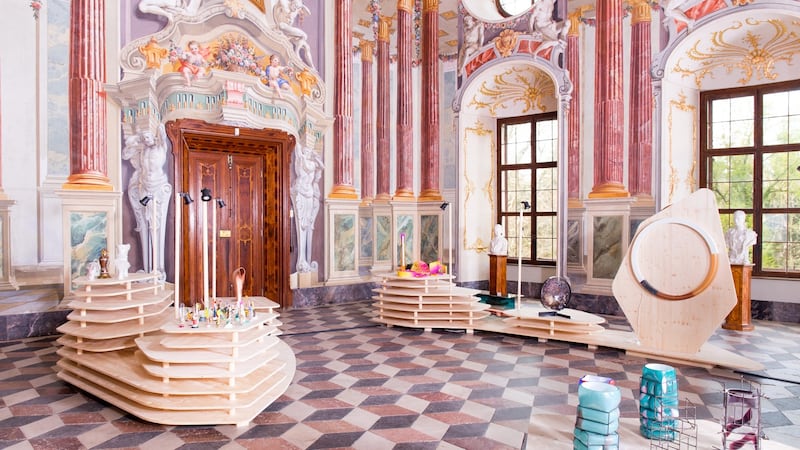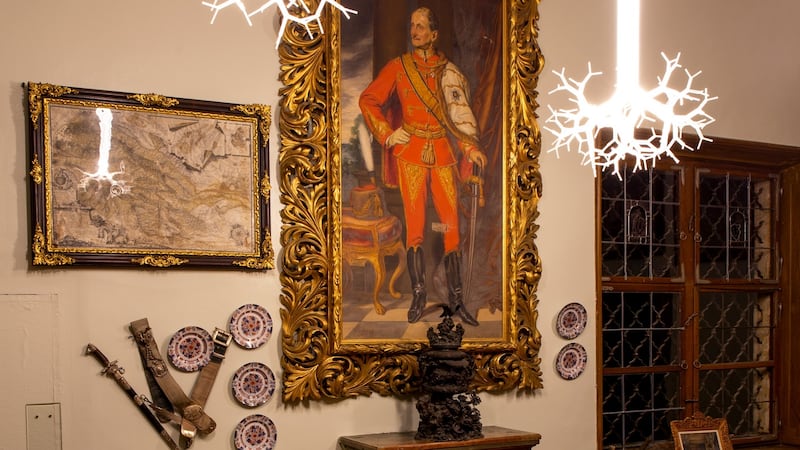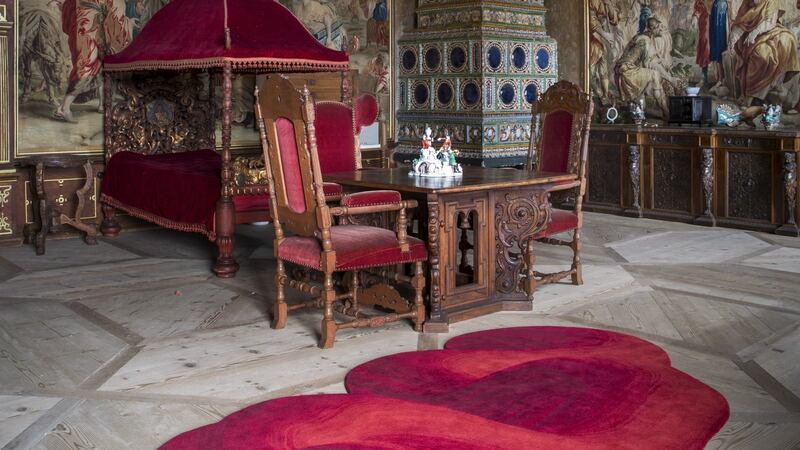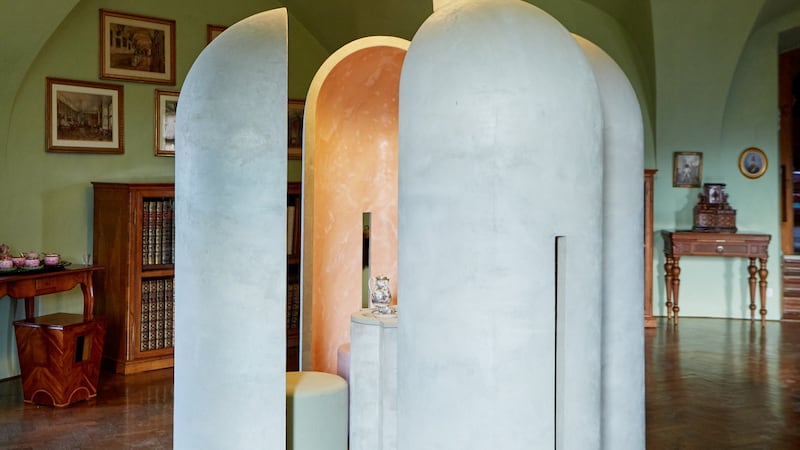"It is almost impossible to be doing anything new," says Alice Stori Liechtenstein, and she should know. The design critic and curator's home, Schloss Hollenegg, a 12th century Austrian castle, has been in her husband's family for 200 years. Surrounded by centuries of art and design, she has been adding distinctly 21st century layers to the past as she and Alfred manage the ongoing task of upkeep and renovations.
Now, as one of the judges for the Design and Crafts Council’s Portfolio selection, she is interested to discover what Irish makers create from our own centuries of tradition.
Established in 2005, Portfolio is the DCCI's international showcase for high-end Irish design. Featuring makers including Úna Burke, who has worked with Lady Gaga, Rhianna and Madonna; silversmith Cara Murphy; basket-maker Joe Hogan; and furniture designers Joseph Walsh, Zelouf & Bell and Stevan Hartung, it's quite a platform.
So how does Stori Liechtenstein see Irish craft and design fitting into an international conversation, and in today’s connected world are there even such things as national characteristics?
“I have been thinking about this a lot,” she says. “We’re still very linked to the idea of Italian design, Dutch design, Nordic design, but people move around so much it’s harder to pinpoint a national style.”

I wonder about this because looking at images of work made on residencies at Schloss Hollenegg, which Stori Liechtenstein has reimagined as a centre for design, the two examples of witty creation that stood out proved to be Dutch, famed for their sharp and contemporary visual humour : a fabulous red carpet by Odd Matter, and coolly amusing chandeliers by Lex Pott.
Love of craft
Despite the international nature of today’s world, the local will still out – in materials and message if not in overall style.
“The Irish,” she says, “have a great care in the details. I see a real love for the craft and how things are made.”
However, you may be dismayed to discover that “from a Continental standpoint, there’s a strong misconception that Ireland is like England. It is not. At all,” she tells me firmly.
We agree that habits such as mealtimes and the drinking of tea unite us with our nearest neighbours, “but the approach, the mentality, is very different. The Irish are much closer to Italians in the way of talking, communicating.”
She says we are also practical, down to business, but with a friendliness that she loves.
Stori Liechtenstein’s relationship with Ireland began in Miami, meeting Cork-based furniture-maker Joseph Walsh over dinner at a design fair. We laugh in rueful commiseration at how much the world has changed over the past 12 months as for two years the pair met around the world – Miami, Basel, Milan – before Walsh invited her to speak at his annual Cork-based international gathering, Making In, in 2019.
Has Walsh himself been on residency at Schloss Hollenegg?
“I joked with him that I can’t invite him as he’s hardly an ‘emerging designer’, and I said that I might just be able to afford to commission a doorknob. It would be a very, very special doorknob . . .”


She’s only half joking, the handles on the castle doors are beautiful things, all engraved metal, and not suitable for being on the receiving end of hard bangs.
“You get used to it. You get too used to it,” she says of being surrounded by centuries worth of layers of art and design.
“That’s the reason why I love when people come to visit, you see things fresh through someone else’s eyes, and then you realise what a privilege it is.”
Renovating Hollenegg
She describes a daily life like most people’s of cooking, shopping, cleaning, tidying up.
“We live in one part of the castle that has,” she says with joy, “central heating, electricity, hot water and proper bathrooms.”
These are clearly a big deal because in 2014 when the family moved in there had simply been old toilets lurking behind screens.
I wonder at how daunting it must have been to tackle such a project.
“When I started renovating Hollenegg people were terrified – what is this Italian woman [she was born in Milan] going to do? Will she destroy the whole castle?
“People are more ready to accept novelty when it integrates with what was there before. That is my way of doing things, and it is also the way of craft. Even when it is extremely revolutionary, there is always a link with the past.”
Stori Liechtenstein is lots of fun, she’s irreverent, or as irreverent as someone who is custodian of an ancient castle can be. Behind her, as we speak by Zoom, is a large Candida Höfer photograph of the library at Trinity College Dublin, a present from her mum.
“People like to have their bookcases behind them for Zoom,” she teases. “Well, I can have this library!”

It is fascinating to see the castle through her eyes, and hear how when the Liechtensteins originally bought it in 1821 they set about neo-gothic renovations inspired by Medieval art.
“They were trying to make it look as if they had been there since the Middle Ages,” she says, also describing Baroque and Renaissance works.
Using art
This is something that is a continuing question in Irish architecture and design: how do you restore and preserve while continuing to move forward? Cutting off architectural history at a certain point, beyond which you can only build “as it was” creates a chasm between then and now that becomes increasingly unbreachable.
We agree that wonderful design is akin to art that you can actually use.
“I’m a big believer in using everything,” she says, although she admits that doesn’t include the entire castle, which has a total of 52 rooms.
“We live in one wing; the rest is for exhibitions. But there’s no point in having beautiful things if no one ever gets to enjoy them. It’s a big bargain between how much do you open and use, and how careful you are with preserving.”
Meanwhile, she has been delighting in raising her children in such a wonderful environment. Having got over the years fearing them drawing on the walls, they are now nine, 12 and 14.


“I really like the way my kids are learning that things have a value and you still can enjoy them. That you can enjoy something beautiful and be a little bit careful with it, rather than have – you know – Nutella glasses . . .”
Like so many she misses travelling: the chance happenings, the generosity of introductions, the opportunity to create and do something new. Restrictions permitting, Stori Liechtenstein is looking forward to being in Ireland in July. Maybe her doorknobs will be ready by then.
Alice Stori Liechtenstein is a DCCI Portfolio 2021-22 judge alongside gallerists Jean Blanchaert, and Juliana Cavaliero and Debra Finn.
The Portfolio application deadline is April 9th, dcci.ie.
See more of the Schloss Hollenegg programme at schlosshollenegg.at










